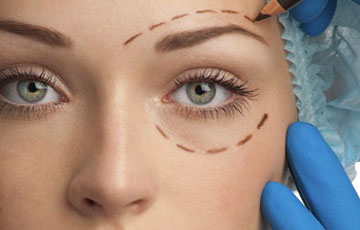
What is an upper blepharoplasty?
The eyes are often regarded as the windows to the soul, revealing our innermost emotions and state of being. They are a focal point of our expressions, conveying vitality and warmth or conversely, fatigue and weariness. Upper blepharoplasty, one of the most commonly performed cosmetic surgeries, addresses excess skin, puffiness and droopiness of the upper eyelids to restore a more well-rested and youthful appearance.
What to expect during your consultation:
During your consultation, it is important for your surgeon to understand your goals and for you to understand what you can expect as a result from surgery. Many different problems are associated with the upper eyelids: true eyelid ptosis (droopy eyelid), dermatochalasis (redundant eyelid skin and fat), eyebrow drooping, and the absence of the appropriate skin crease. Evaluation of the upper lid area includes the understanding of these features, as well as the understanding of the underlying eye and its physiology. All of our doctors are fellowship trained oculoplastic surgeons with an appreciation for the nuances and many variations of upper blepharoplasty.
What is involved in cosmetic upper blepharoplasty surgery?
Cosmetic upper blepharoplasty is performed at the accredited surgical suite located within our office. On the day of surgery, you will meet an anesthesiologist who will administer intravenous medications, allowing for excellent comfort and relaxation. Your surgeon will then mark your upper eyelids, creating a customised plan about the tissues to be removed or repositioned. It is very important to recognize that there must be adequate upper lid skin left in place to maintain a normal and comfortable eye for the rest of one’s life. At the conclusion of surgery, sutures will be placed to close the upper eyelid incision. You will then move to our recovery area, where you will relax in a recliner with a cool compress over the surgery site. A nurse will review post operative instructions with you and ensure that you are feeling well before departing home.
What to expect after upper blepharoplasty?
Bruising and swelling begin on the day of the procedure, commonly worsening for the first 3 – 4 days and improving over the next 1 – 2 weeks. During the first 48 hours, cool compresses should be used frequently, at least 20 minutes of every hour. Throughout the first week, you should avoid any strenuous activity and you will apply antibiotic ointment to the incisions a few times per day. While much of the bruising and swelling often improves within the first few weeks, we recommend at least 2 months between your eyelid surgery and any important event where you want to look your best.